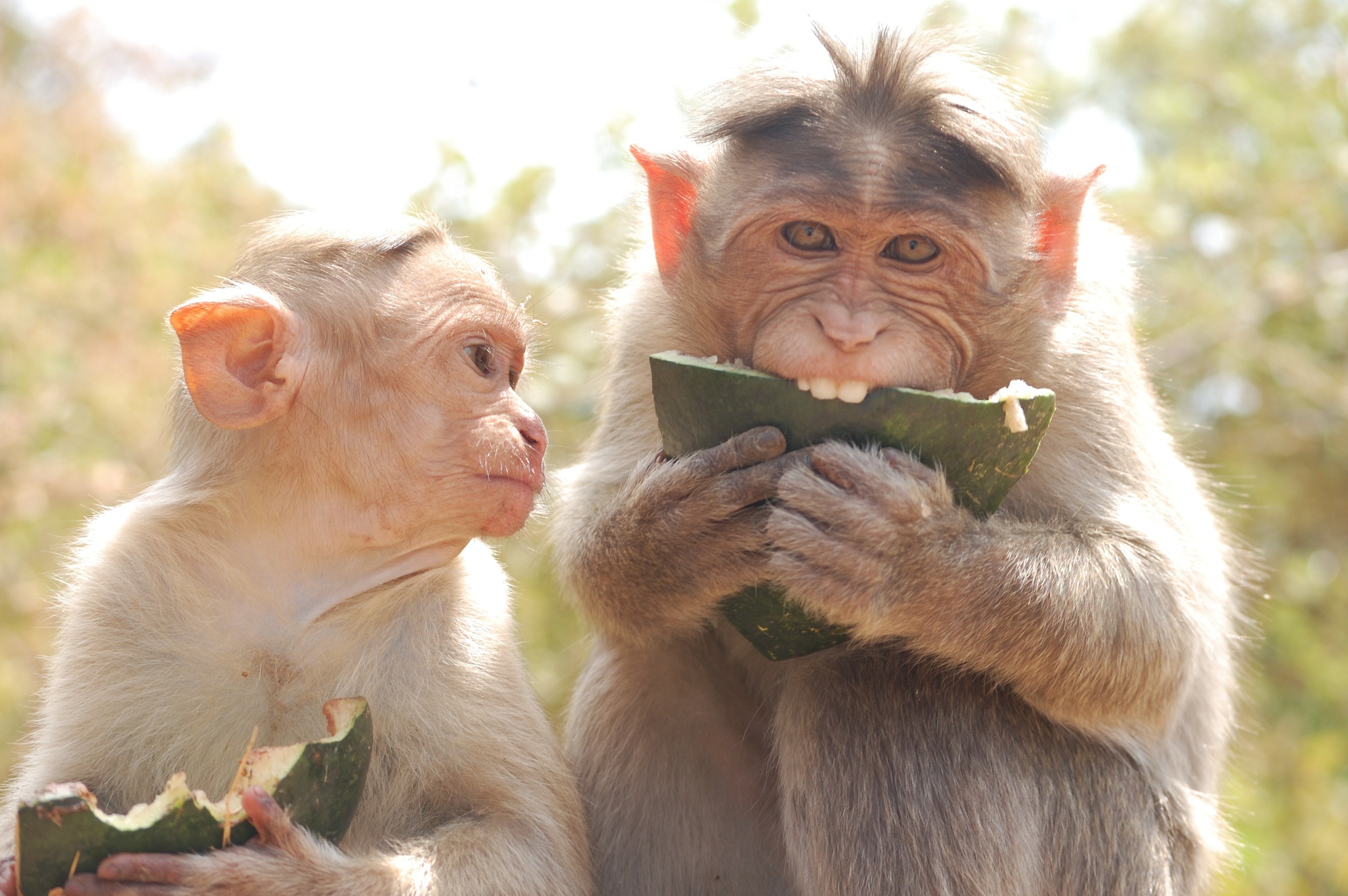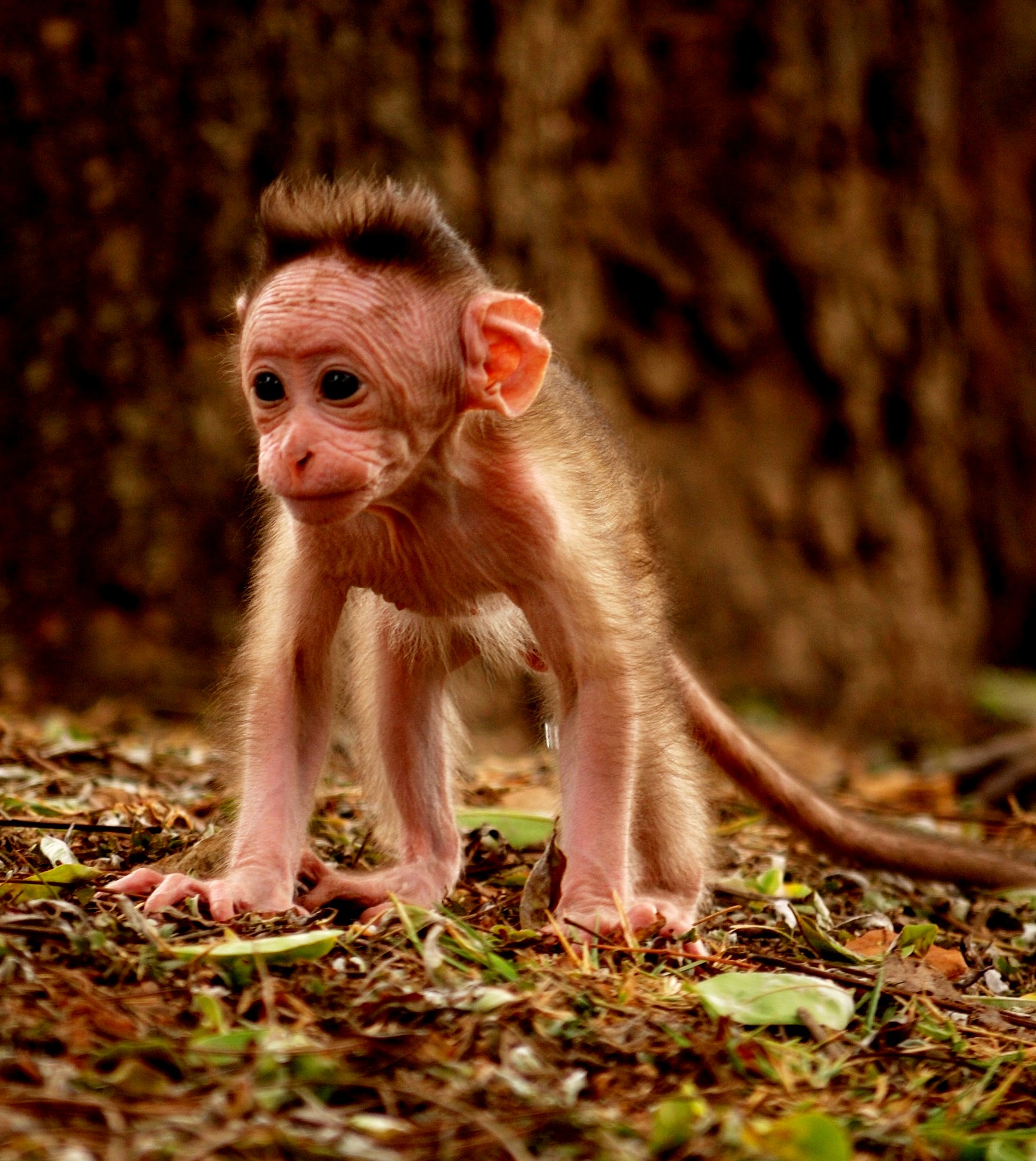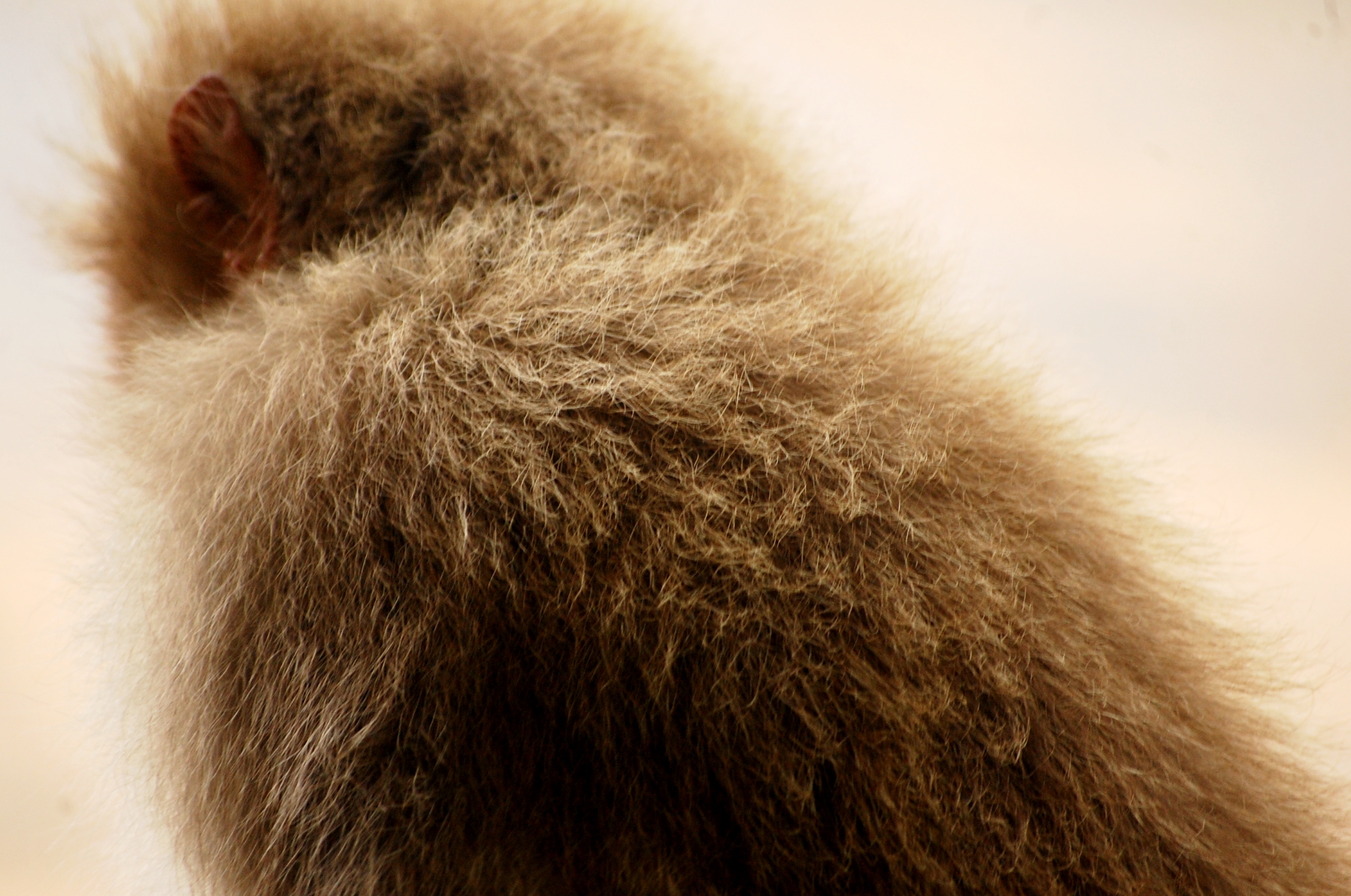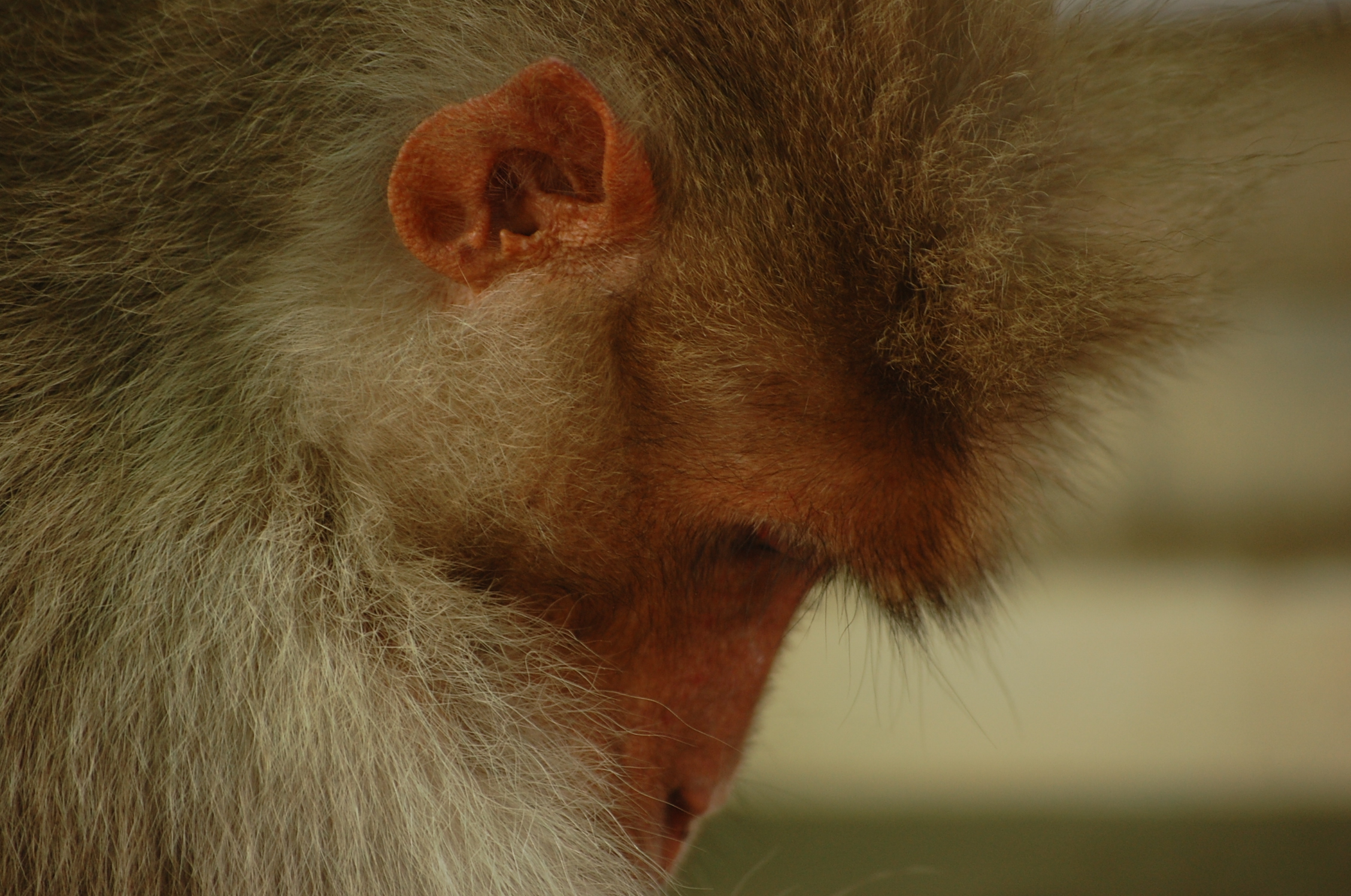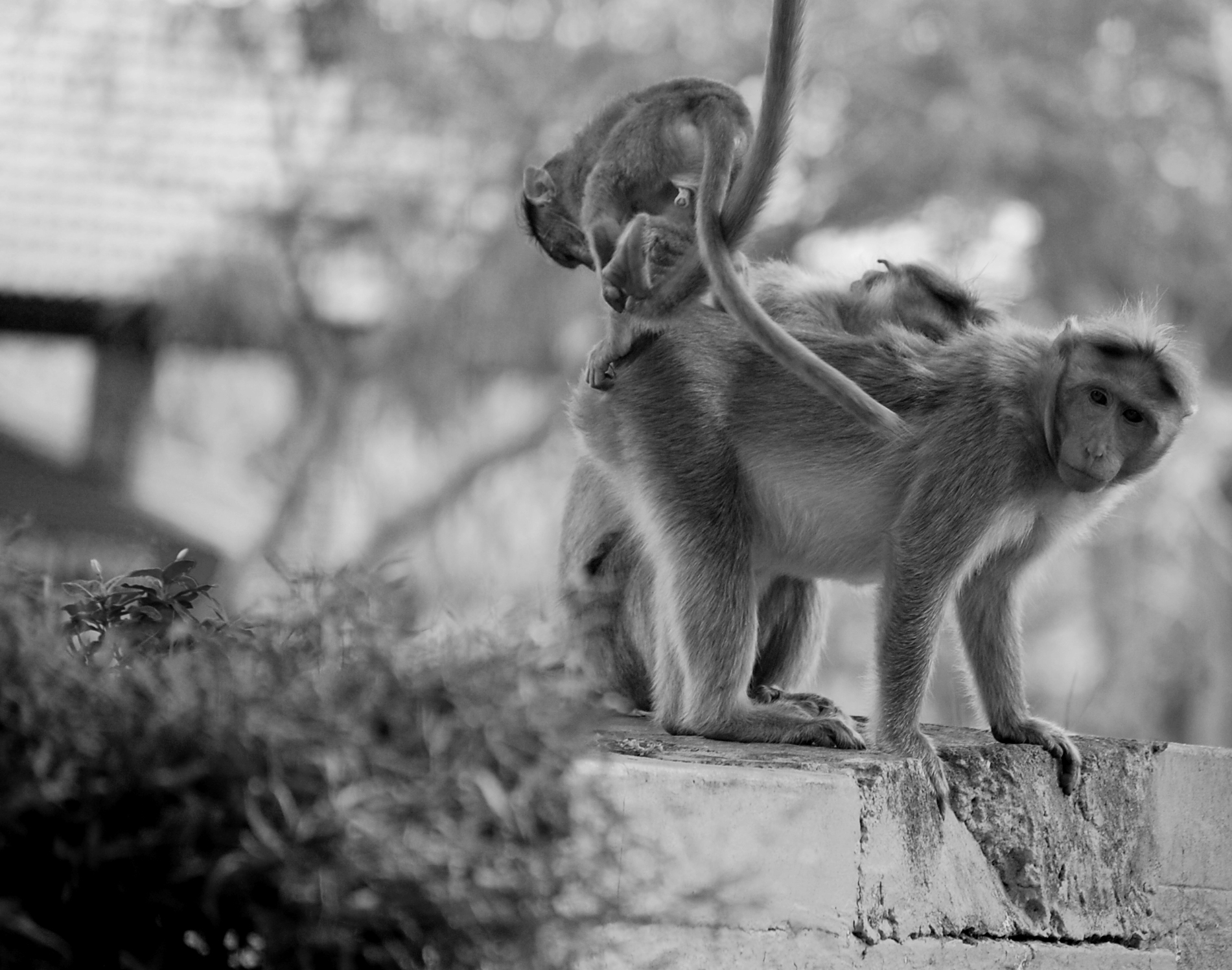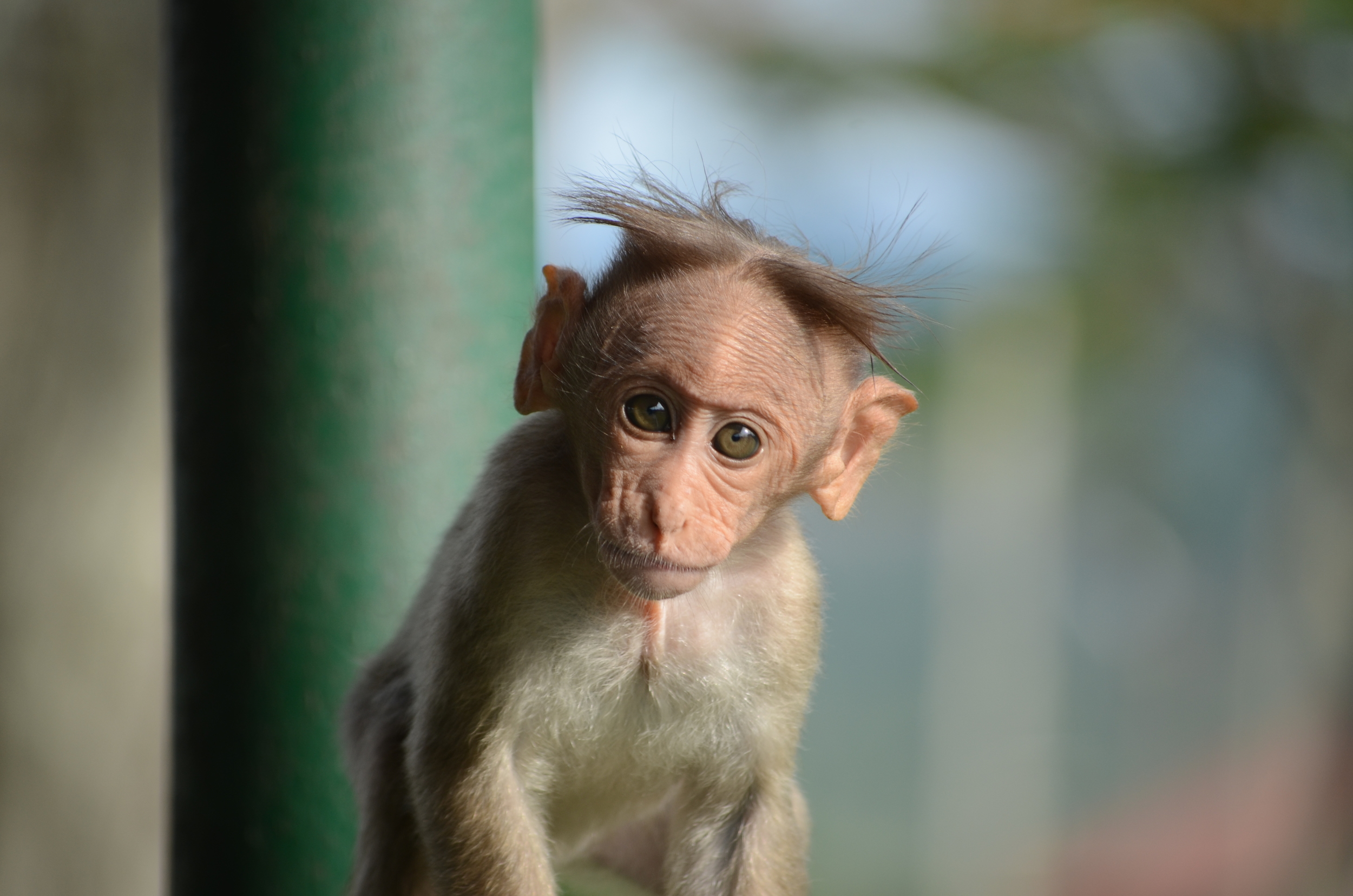The best way to photograph anything is to know what it is your are photographing. I am conducting a series of interviews with experts in their respective fields to understand what they are working on and to to provide you with a better understanding of their subject.
Last month I posted an interview with Vicki Fishlock on African Bush Elephant . This month I contacted good friend of mine, and wildlife compatriot, Shreejata Gupta to pick her brains about Bonnet macaques! :) She provided some of her field photographs and a couple of videos of her and her troop!
Along with this interview, she answered my "know you subject" (KYS) questionnaire, designed to help us safely photography monkeys! This will be out on Sunday!
Monkey selfie!
Researchers name: Shreejata Gupta
Affiliation: National Institute of Advanced Studies (NIAS), Bangalore, India
Funding: Department of Science and Technology (partially, for field work), and NIAS (for Doctoral fellowship)
Research location: Bandipur National Park, Karnataka, India
Research Subject: Bonnet macaques (Macaca radiata)
Research aim: Gestural communication in bonnet macaques: age-sex differences in its structure and use, factors affecting development of gestures and their flexible use in sequences (this is not my thesis title, but the aims of the thesis in brief)
Why are you interested in monkeys? What is it about them that make you get up in the morning to study them?
It was rather a coincidence that I ended up studying the bonnet macaques. I was always interested in Ecology and Evolutionary Biology, ever since my Bachelors days. During my masters, I studied the habitat preference behavioural ecology of the Alpine Ibex, although using very different tools than I currently use for my research (GIS vs on-field behavioural data collection).
Following my masters, I was exploring various subjects, pursuing which would define my career. I began working on the genetic diversity of a passerine bird species in the Western Ghats, during which I started working on a side-project on bird-song. That caught my attentions, I eventually started fascinating about the evolution of language, during which, I happened to attend one of the lectures by Anindya Sinha, my PhD supervisor. That lecture changed the course of my life, I became interested in primates, their communication systems, and how they could be linked to the larger questions of finding roots to our faculty of language.
Personally speaking, waking up every morning looking forward to observing monkeys has been the most exciting thing in my life. Barring those frustrating days when those buggers were nowhere to be found, I had not a single boring day on field. Even when I was not systematically observing them for my data, it was always a treat to watch their activities.
(Sorry, I babbled. It’s hard to keep the answer to this question short). [hehehehe]
Can you expand on the aim of your project? What is it you are trying to find out, and why is this important?
The goal of my research is to understand the gestural communication of bonnet macaques. There are several modalities through which every primate species communicate with each other – olfactory, vocal, and gestural – of which gestural communication has been reported closest to human language. Such conclusion is drawn owing to the similar brain areas being involved in the production of the two, the similarities in flexibility of production as well as intentional use, as well as ontogenetic similarities of gradual acquisition during an individual’s lifetime. While quite extensive research has been conducted on gestural communication system of apes, similar studies have not been conducted in non-ape species. Moreover, the definitions adopted in these two attempts have been different, thus providing no common grounds for future comparative studies. My study aims to bring monkey-gesture research at par with those in apes, and humans, in order to provide for shared grounds for phylogenetic comparisons with respect to gesture structure, function and development across apes and non-ape species. Such an effort would perhaps eventually enable us to identify language-like markers in primate lineage, which are evolutionarily older than those that have been found in apes, the closest kin of human beings.
How do you answer this question? What data is it you are collecting and how do you collect it?
First, I find a troop of monkeys, individuals of which I have already identified on the basis of their morphological features. I then randomly select one, and observe for 15 minutes and manually document all individual and social behaviour that has been displayed and received by it (focal animal sampling Altmann 1974). Analysis is done afterwards, when I categorise each behaviour on the basis of the responses elicited, presence of audience and other criteria for them to be qualify as a gesture. Finally I try to look for patterns with respect to the age- sex of the subjects and their influence on the kinds and frequency of gestures used.
What does ‘an average’ day entail?
Waking up to a beautiful morning in a hut surrounded by forest and the blue-mountains. Waiting for the (un)timely village bus to take me to my field site (1/2 hour to 1 hour). Finding the troop and waling with them all day long, until they are ready to roost in the evening, and my last red-bus back to the village is seen at the horizon.
What, if you can share, have you found out?
- Gestures in macaques are both similar and dissimilar to those in apes
- There is variation in the gesture types and use between the adults and the juveniles and infants, suggesting a developmental factor in action
- The process of development is perhaps not similar to those in apes. In apes both gesture production and use are acquired through individual learning process, while in macaque, it seems that gesture production is genetically determined, while their use is gradually learned in flexible and intentional manner with experience
- There are indications that a particular type of indicative gesture is used by this macaque species, which is quite special and crucial with regard to human language. Only chimps in the wild, ravens and a fish species have been found to use similar gestures in the wild, earlier. We are not entirely sure about the details of this gesture in bonnet macaques yet’ preliminary findings show promising potential, however it will require further controlled studies to establish it.
Why should other people be excited by your work and what is the impact to the general public?
- To know more about themselves, the history of their species. (Although I don’t think that is exciting enough for the mass).
- Knowing about their communication may be used as a strategy to understand their motivations, thus, in turn, help in mitigating macaque-human conflict.
- To convey policy makers that these apparent mundane macaques, easily found everywhere, are sinks of information, and it is important to save them too.
What is your most memorable time had with the subject? / Can you share your most exciting experience whilst doing this research? / Can you share a funny or amusing incident?
During filed work on communication behaviour of bonnet macaques in Bandipur National Park, India.
I must say, almost everyday. One incident, however, will remain etched in my memory forever. A three month old monkey infant, belonging to one of my study troops, lost its mother to the neighbourhood dogs. The villagers rescued it, but it refused to let anybody approach. It wasn’t eating and kept threat growling all along. The moment I approached it jumped onto my shoulder, clutched onto my t-shirt and started lip-smacking, an affiliative gesture they show to their own kind! I knew adult macaques recognize people, and distinguish from one another, but I never thought an inter-species facial recognition starts as early as it happened for this particular infant, in the species. I felt rather special! This would be both a memorable and exciting experience during my study.
A funny and embarrassing one happened when the alpha male of one of my study troops approached me with strict determinations, as I kept retreating, until I rolled down a steep slope into a dried up pond; the funnier part being, the alpha came till the edge of the pond and peeped in to see me fall. (I am not making this up!) [you can read a full account of this here]
There have been other incidents when a subordinate female came and showed her subordinate status by presenting in front of me; the alpha male of another study troop used to Copulatory lip-smack at me (a gesture used in intra-species courtship), climb up to my shoulder and sniff my hair, only when we were away from the other troop members. When the others returned he ‘pretended’ to not have known me or interacted with me at all! The juveniles used to always frolic around me, tugging at my notebook, pulling my trousers and shoe-lace, grooming me once in a while: fun stuff!
Where can we find out more information or follow your research?
You can find our more about my research on researchgate and my blog!
How can we help?
Just spread the word that this kind of research is important to know basic biology of the commonest species, for it holds answers to crucial questions. Moreover, running after monkeys, or after any animal, for that matter, in a jungle does not necessarily have to be National Geographic. We need more collaborators and funding!
Many thanks for sharing Shreejata... we hope you and your monkey buddies the best of luck!



